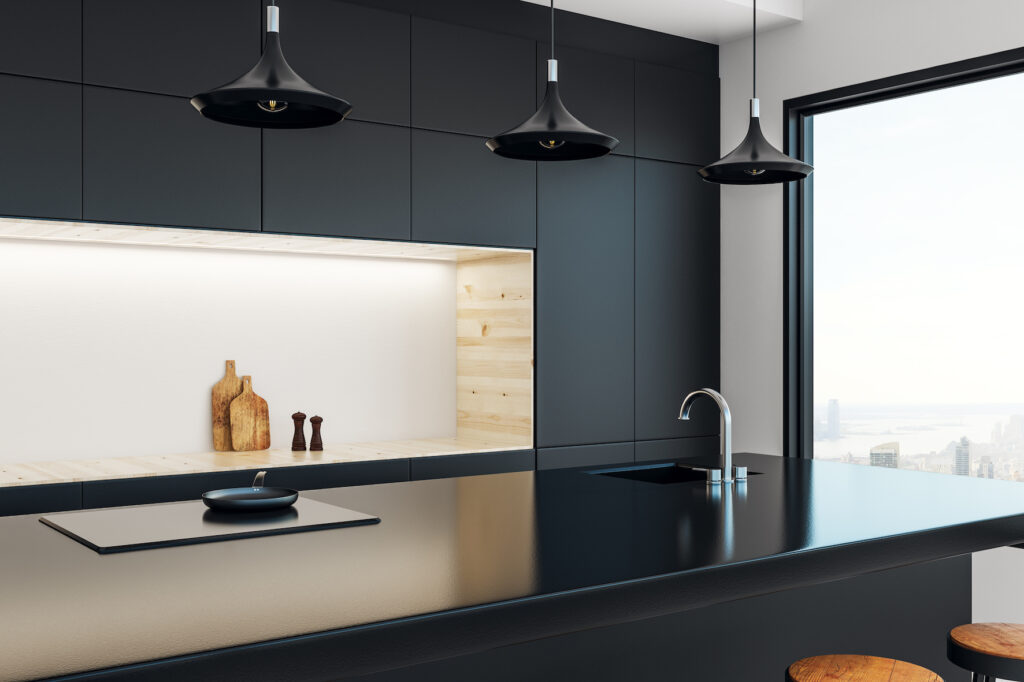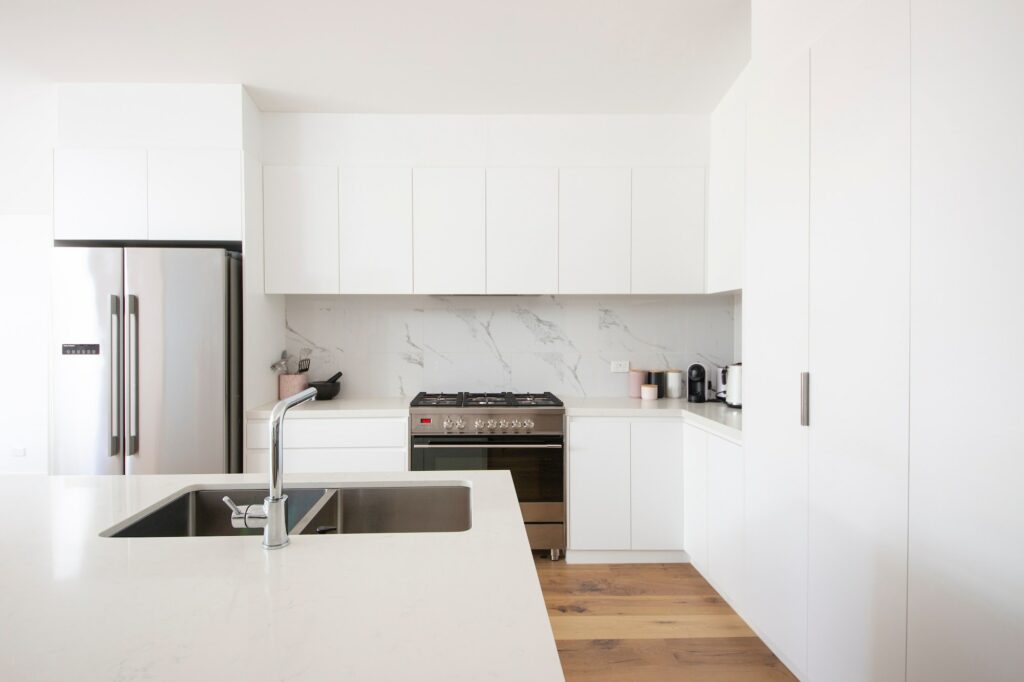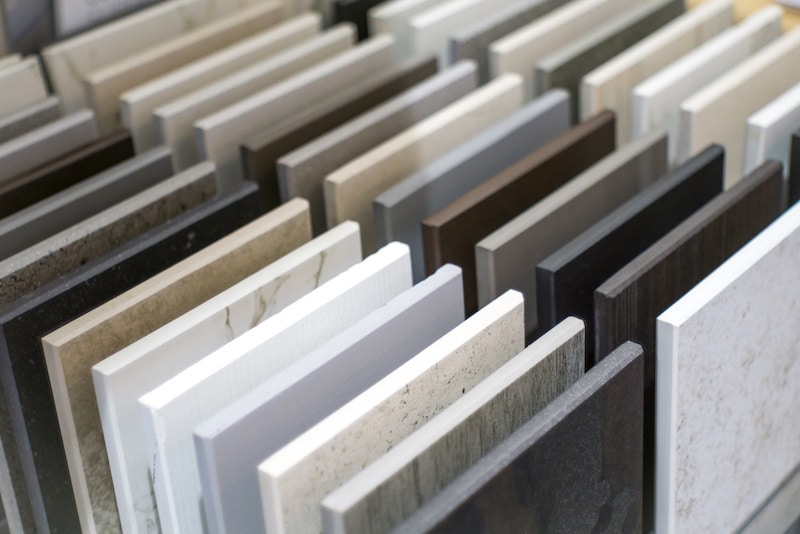Introduction
Solid surface materials are designed to provide durable and versatile surface options for countertops, among other applications. Generally speaking, they can be divided into stone solid surface worktops and non-stone solid surface worktops. The former includes materials such as marble, granite and quartz, whereas the latter includes materials such as acrylic, laminates and wood. They bring elegance to kitchen worktops, bathroom worktops, and commercial worktops with their seamless joints, durability, and easy maintenance. In this article you will learn about the world of solid surface worktops and discover the perfect blend of elegance and functionality for your living spaces.

Stone Solid Surface Worktop Materials
Stone solid surface worktops are favoured for their inherent elegance and lasting durability, making them a practical choice for various applications. The natural variations, unique veining, and diverse colours found in stone contribute to its visual appeal. Stone worktops are known for their heat resistance, toughness, and extended lifespan, making them a sensible long-term investment. In this category, several types of stone worktops are available.
- Marble worktops offer intricate patterns, embodying sophistication.
- Granite worktops stand out for their durability and wide range of textures and colours.
- Quartz worktops offer a blend of elegance and resilience, combining natural quartz crystals with resins, resulting in a versatile array of colours and designs.
Each type of stone worktop possesses distinct characteristics, catering to a variety of aesthetic preferences and upholding the enduring reputation of stone craftsmanship.

Other Solid Surface Worktop Materials
Non-stone solid surface worktops encompass a range of materials selected for specific attributes.
- Acrylic-based options, derived from petrochemicals, are manufactured through a casting process that allows for a variety of colours and a seamless appearance, suitable for modern spaces. If you want to find out more, check out this Acrylic Worktop Installation Price Cost Guide.
- Engineered materials, often a combination of acrylic or polyester resins with minerals like aluminium trihydrate, are manufactured through compression moulding, enhancing durability and providing resistance against scratches and stains.
- Laminate surfaces consist of layers of paper or fabric impregnated with resin and bonded to particleboard, offering cost-effectiveness and a variety of patterns.
- Wood surfaces, sourced from sustainably managed forests, are crafted through precision milling and joined using advanced adhesives, contributing warmth and a natural touch but requiring careful maintenance. If you want an accurate cost breakdown of Oak worktops for example, check out this Oak Installation Cost Guide.
These materials present diverse choices, each with unique qualities to match various design preferences and utility requirements.
Things To Consider When Choosing a Solid Surface Worktop
When selecting a solid surface worktop, understanding the pros and cons of both stone and non-stone options can guide your decision-making process. Here’s a breakdown of the advantages and drawbacks for each:
Stone Solid Surface Worktops
Pros
Timeless Elegance: Stone worktops exude natural beauty with unique patterns and colours.
Durability: High resistance to scratches, heat, and impact, ensuring longevity.
Variety: Different stone types like marble, granite, quartzite, and engineered quartz offer diverse aesthetics.
Resale Value: Adds value to your property due to its premium appeal.
Cons
Maintenance: Some stone types may require periodic sealing to prevent staining.
Cost: Initial investment can be higher due to extraction and fabrication processes.
Weight: Heavier than non-stone alternatives, requiring proper support during installation.
Non-Stone Solid Surface Worktops
Pros
Versatility: Wide range of colours, patterns, and textures to suit modern design preferences.
Durability: Engineered materials offer resistance to scratches, stains, and impact.
Seamless Appearance: Acrylic-based options provide a smooth, jointless surface.
Cost-Effective: Options like laminate offer affordability without sacrificing style.
Cons
Limited Natural Aesthetics: Non-stone materials lack the authentic beauty of natural stone.
Prone to Heat Damage: Acrylic-based surfaces can be sensitive to high heat.
Potential Wear and Tear: Laminate surfaces may show signs of wear over time.
Maintenance Variability: Different materials may require varying levels of care.
Ultimately, the choice between stone and non-stone solid surface worktops depends on your aesthetic preferences, budget, and functional requirements. Carefully considering these pros and cons will help you make an informed decision that aligns with your vision and lifestyle.
Solid Surface Worktops From Marble Supreme
If you think stone solid surface worktops may fit your criteria, and you want the best stone on the market, then make sure you check out our marble worktop, granite worktop, and quartz worktop pages, followed by contacting us to get your free quote.
